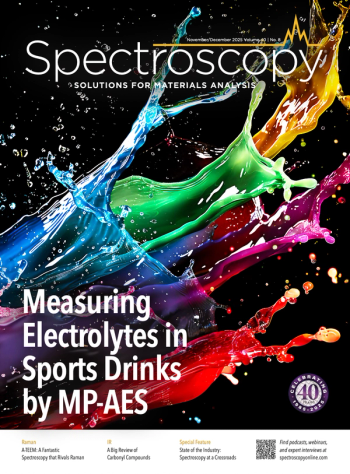
Renewing ATR Spectroscopy: A Breakthrough in Overcoming Contact Challenges
Luis G. Vieira from Universidade do Minho presents a new method in Applied Spectroscopy to address poor contact issues between the sample and the internal reflection element in attenuated total reflection (ATR) spectroscopy, ensuring accurate optical function determination and opening new avenues for precise material analysis
Researcher Luis G. Vieira from Universidade do Minho, Braga, Portugal, has introduced an innovative method to address the contact issues in quantitative attenuated total reflection (ATR) spectroscopy when dealing with flat samples. His novel approach, outlined in the recent issue of Applied Spectroscopy, offers a robust solution to situations where achieving perfect contact conditions is uncertain or unattainable.
The study focuses on the critical problem of poor contact between the sample and the internal reflection element (IRE), a challenge that can significantly impact the accuracy of optical function determination in ATR spectroscopy. Traditionally, discrepancies arising from imperfect contact conditions could lead to substantial errors in the interpretation of results.
Vieira proposes a method that treats the spacing between the IRE and the sample as an adjustable parameter during the simultaneous fitting of s- and p-polarized spectra. This novel approach introduces flexibility into the analysis, allowing the adjustment of the gap distance alongside dispersion model parameters. The goal is to accurately determine optical functions even when faced with uncertainties related to the contact between the sample and the IRE.
The effectiveness of the method was validated through experimental tests on a solid polystyrene slab, a common material in ATR spectroscopy. By conducting experiments on both synthetic and polystyrene spectra, Vieira showcased the method's capability to overcome contact issues and precisely determine optical functions.
The results of the study emphasize the importance of considering the gap distance between the IRE and the sample in ATR measurements. Neglecting this factor can lead to substantial errors in determining optical functions, especially in situations where the contact conditions are not ideal.
The proposed method provides a much-needed solution for spectroscopists dealing with flat samples made of homogeneous and isotropic materials. It ensures accurate results, irrespective of uncertainties in achieving perfect contact during experiments. The ability to treat the gap distance as an adjustable parameter enhances the reliability and robustness of ATR spectroscopy, offering researchers a newfound confidence in their analyses.
This research not only advances the methodology of ATR spectroscopy but also opens up possibilities for more accurate and reliable analyses of various materials. As the analytical community strives for precision and reproducibility in experimental techniques, this innovative approach takes a step forward in overcoming longstanding challenges associated with contact issues in ATR spectroscopy.
This article was written with the help of artificial intelligence and has been edited to ensure accuracy and clarity. You can read more about our
Reference
(1) Vieira, L. G. Overcoming the Contact Problem in Quantitative Attenuated Total Reflection Spectroscopy Analysis of Flat Samples. Appl. Spectrosc. 2023, 77 (11), 1221–1227.
Newsletter
Get essential updates on the latest spectroscopy technologies, regulatory standards, and best practices—subscribe today to Spectroscopy.



